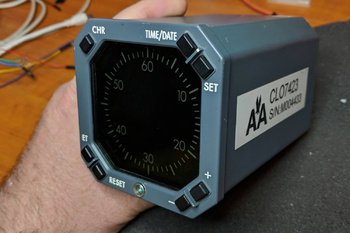Auto Brake Usage
The auto brake is designed as a deceleration aid to slow an aircraft on landing or in rejected take off. The rotary switch has four settings: RTO (rejected take off), 1, 2, 3 and MAX (maximum). The brake can be disengaged by turning it to OFF, by activating the toe brakes, or by advancing the throttles; which deactivation method used depends upon the circumstances and pilot discretion.
RTO and MAX provide similar braking power (3000 PSI). 1, 2, 3 and MAX provide an indication to the severity of braking that will be applied when the aircraft lands. Often, but not always the airline will have a policy to what level of braking can or cannot be used; this is to either minimize aircraft wear and tear or to facilitate passenger comfort.
In general, setting 1 and 2 are the norm with 3 being used for wet runways or very short runways. MAX is very rarely used and when activated the braking potential is similar to that of a rejected take off; passenger comfort is jeopardized and it’s common for passenger items sitting on the cabin floor to move forward during a MAX braking operation. This 'safety feature' is the reason why Boeing airframes have been designed so that the pilot must pull the auto brake knob before selecting MAX.
If a runway is very long and environmental conditions good, then a pilot may decide to not use auto brakes favoring manual braking.
The pressure in PSI applied to the auto brake and the applicable deceleration is a follows:
Auto brake setting 1 - 1250 PSI / 4 ft per second.
Auto brake setting 2 - 1500 PSI / 5 ft per second.
Auto brake setting 3 - 2000 PSI / 7.2 ft per second.
Auto brake setting MAX and RTO - 3000 PSI / 14 ft per second (above 80 knots) and 12 ft per second (below 80 knots).
To activate the auto brake it must be armed by selecting the appropriate setting using the auto brake selector knob (1, 2, 3 or MAX). Furthermore, for the auto brake to engage the throttle thrust levers MUST BE in the idle position at touchdown. If the auto brake has not been selected before landing, it can still be engaged providing the aircraft is travelling no slower than 60 knots.
The auto brakes can be disengaged by either pilot by applying manual braking or selection the auto brake selector knob to OFF. Either action will cause the auto brake disarm annunciator to illuminate for 2 seconds before extinguishing.
Important Facet
It’s important to grasp that the 737 NG does not use the maximum braking power for a particular setting (maximum pressure), but rather the maximum programmed deceleration rate (predetermined deceleration rate). You can only obtain maximum braking pressure using either RTO or when depressing the brake pedals. Therefore, each setting (other than RTO) will produce a predetermined deceleration rate, independent of aircraft weight, runway length, type, slope and environmental conditions.
Auto Brake Disarm Annunciator
The auto brake disarm annunciator is coloured amber and illuminates when the following conditions are met:
Self test when RTO is selected on the ground.
A malfunction of the system (annunciator stays illuminated - takeoff prohibited)
Disarming the system by manual braking during an RTO or landing
Disarming the system by moving the speed brake lever from the UP position to the DOWN detente position.
If a landing is made with the selector knob set to RTO (not cycled through off). If this occurs the auto brakes are not armed and will not engage. The annunciator will remain illuminated
The annunciator will extinguish in the following conditions;
Personal Preference and Anti-skid
My preference for using auto brakes is, that when conditions are not ideal (shorter and wet runways, crosswinds) - I devote my attention to the use of rudder (for directional control) without concern for braking... the machine does the braking, and I take care of keeping the aircraft on the center-line...
Anti-skid automatically activates during all auto braking operations and is designed to give maximum efficiency to the brakes, preventing brakes from stopping the rotation of the wheel, thereby insuring maximum braking efficiency.
To read more on this subject navigate to: Rejected Takeoff (RTO) - Review and Procedures.
BELOW: Photo montage of auto brake assembly. Final conversion lower right picture - ready to install to MIP.














































